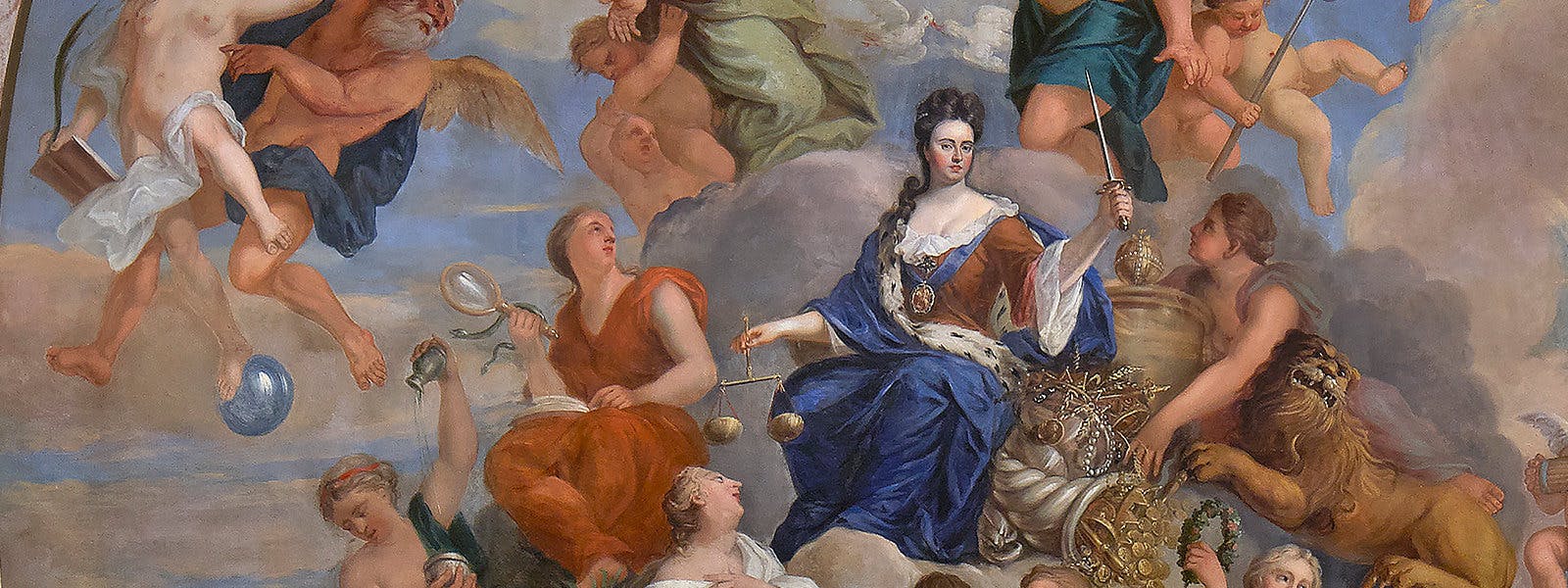
The stoical Stuart who, despite ill health and tragedy, was a surprisingly successful monarch
Queen Anne, younger daughter of James II, is often overlooked by historians, yet her time on the throne (1702-14) changed Britain forever. Her reign saw the end of the Stuart dynasty and laid the way for the Georgian era. Queen Anne completed the building of the baroque palace at Hampton Court Palace, and lived and died at Kensington Palace.
Her life story reveals intriguing contradictions: Anne was a dedicated and conscientious stateswoman who oversaw the lasting union of England and Scotland, she was also a mother in poor health, who endured 17 pregnancies and outlived all her children. Painfully shy, yet able to assert her authority when needed. Devoted to her kind but dull husband, yet entangled in passionate female friendships.
As fascination grows with her favourites, Lady Sarah Churchill and Lady Abigail Masham, it is time to look more closely at this remarkable queen.
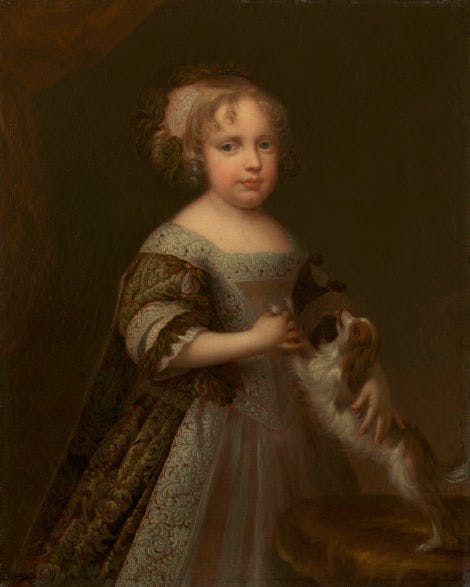
Image: Queen Anne (1665-1714) when a princess c1668-70, Royal Collection Trust / © Her Majesty Queen Elizabeth II
A Stuart princess
Anne was born into the heart of royal and political life on 6 February 1665. The daughter of James, Duke of York (who became King James II), and his first wife, Anne Hyde, her uncle was King Charles II.
When she was born, it was not anticipated that Anne would become queen. While her education was more suitable for a domestic lady than a future queen, it did instill in her a strong loyalty to the Church of England.
Although Anne’s father was a Catholic, on Charles II’s instructions she and her elder sister Mary were raised as Protestants.
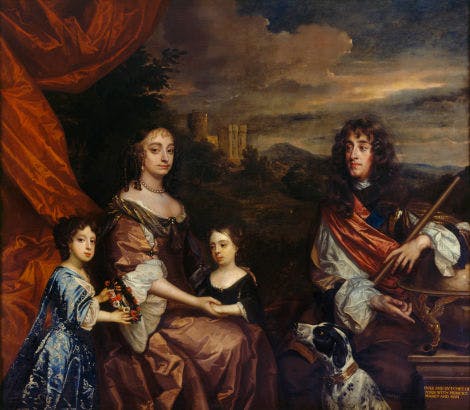
Image: James II, when Duke of York with Anne Hyde, Princess Mary, later Mary II and Princess Anne c1668-85, Royal Collection Trust/ © Her Majesty Queen Elizabeth II
Anne's early life
The course of Anne’s life was defined by the politics of royal succession, and the conflicts between Protestantism and Roman Catholicism.
Her mother died when she was only 6 years old, and her father’s second marriage in 1673 to Mary of Modena confirmed his allegiance to the Roman Catholic faith.
A French childhood
Anne spent part of her childhood in France, being treated for an eye problem. Although she continued to have poor sight throughout her life, her French was excellent, which came in useful when dealing with foreign ambassadors later as queen.
Connections with Europe were strong, and Anne’s sister Mary married William of Orange, Stadholder of Holland in 1677, leaving England to live with her new husband.
Did you know?
When Anne’s father remarried in 1671, his new wife was less than four years older than her sister Mary.
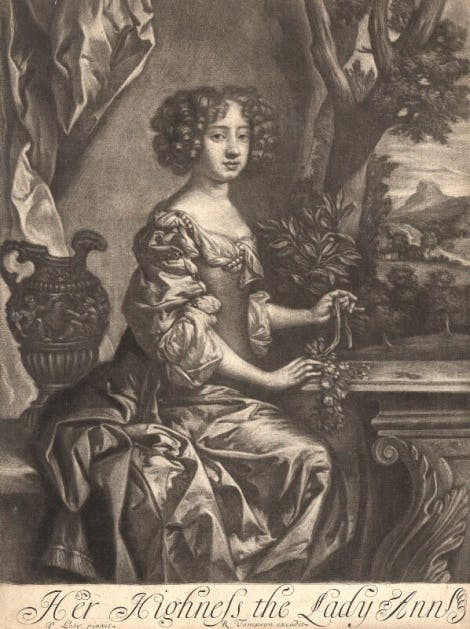
Image: Queen Anne when princess, © National Portrait Gallery, London
Female friendships
Anne, quiet and lacking confidence by nature, needed passionate, close and loyal human connection. Her female friendships were very important to her.
As young women, she and her sister Mary exchanged passionate letters with other women.
Mary addressed Lady Frances Apsley as her ‘husband’, while Anne begged Lady Sarah Churchill to always be by her side.
Anne’s passionate love for Sarah would change the course of both women’s lives.

Image: Sarah Churchill, after Sir Godfrey Kneller, © National Portrait Gallery, London
The rise of Lady Sarah Churchill
Sarah, the daughter of an impoverished gentry family, first came to court in 1673 as a maid of honour to Mary of Modena. She was five years older than Anne. With her confident character, she must have impressed the young princess.
Sarah met her husband, John Churchill, at court. He was a page to Anne’s father, James. Despite opposition from their families, they married in secret in the winter of 1677-8. A love match, at a time when this wasn’t always the case among noble families, they had a strong marriage.
Their allegiance to Anne, and John’s talent as a military commander, helped the couple climb the social hierarchy, becoming Duke and Duchess of Marlborough in 1702.
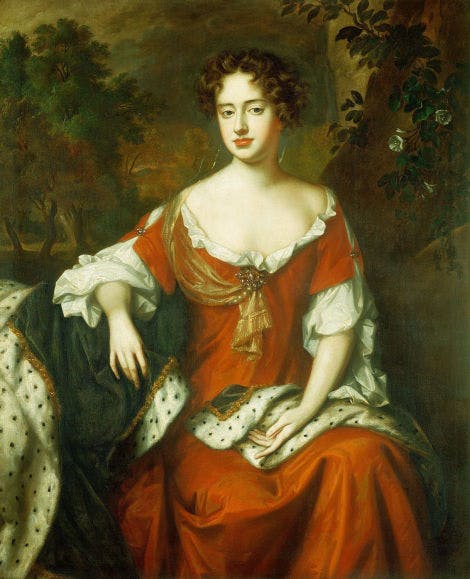
Image: Queen Anne when Princess of Denmark c1683. Royal Collection Trust / © Her Majesty Queen Elizabeth II
Oh come to me tomorrow as soon as you can that I may cleave myself to you.
Anne (pictured) to Sarah Churchill.
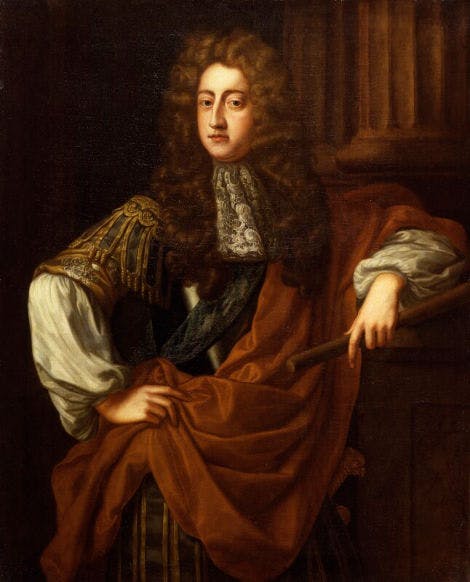
Image: Prince George of Denmark, Duke of Cumberland after John Riley, © National Portrait Gallery, London
Anne's marriage to Prince George of Denmark
As a princess, Anne needed to make a politically suitable marriage. A match between Anne and Georg Ludwig, the elector of Hanover (and the future King George I) was briefly suggested when he visited England from 1680-1681. It was not to be.
Instead, in 1683 a political match was made between Anne and Prince George of Denmark (1653-1708). They married on 28 July 1683.

Image: Painting by the studio of John Riley, © National Portrait Gallery, London
I have tried him drunk and I have tried him sober and there is nothing in him.
Charles II being cruel about Prince George of Denmark.
A life of love and tragedy
Despite his reputation for dullness, Anne came to love George very dearly, and unlike many royal couples, they regularly shared a bed.
Their personal life was marked by the tragedy of losing 18 children (including twins) through miscarriage, stillbirth and early death. Two of their daughters, Mary and Anne Sophia, died within days of each other, both aged under two years, of smallpox in 1687.
Did you know?
Anne and George liked Hampton Court Palace for its clean country air, and Anne enjoyed hunting in the palace grounds.
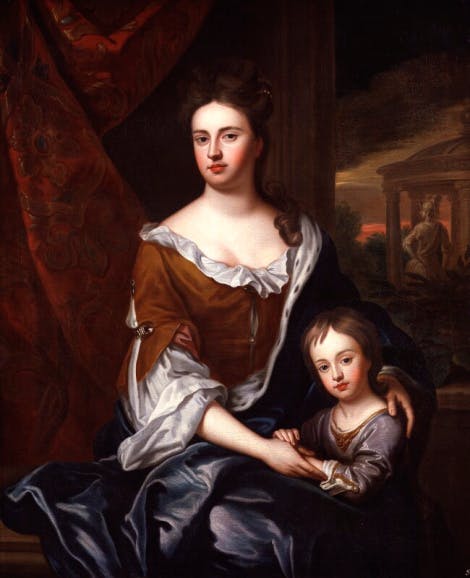
Image: Queen Anne and William, Duke of Gloucester, © National Portrait Gallery, London
Anne's longed-for heir
The politics of their age meant this was a tragedy not just inside the palace walls, but outside them, as the future of the Stuart dynasty came to depend on Anne’s ability to produce an heir.
Only one of Anne’s children survived beyond infancy. William, Duke of Gloucester was born at Hampton Court Palace on 24 July 1689.
His health was initially weak, but as he grew older he took a keen interest in military affairs. He drilled his own regiment of boys from Kensington, dressed as little soldiers.
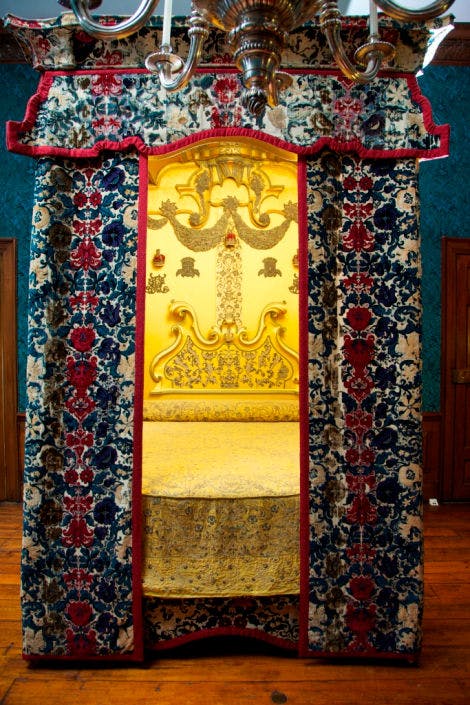
Image: The 'Mary of Modena' bed at Kensington Palace, © Historic Royal Palaces
The 'warming-pan' baby
On 10 June 1688, Anne’s stepmother, Mary of Modena, gave birth to a baby boy, in a beautiful state bed you can now see at Kensington Palace.
Earlier, Anne had alleged that the pregnancy was false. This healthy baby boy displaced Mary and Anne in the royal succession, James II now had a male heir who could be brought up in the Catholic faith.
Anne refused to attend the birth, and rumours soon spread that the baby was an imposter, smuggled into the bedchamber in a warming-pan to replace a still-born baby prince.
She never accepted that the baby, James Francis Edward Stuart, known as ‘The Old Pretender’, was legitimate.

Image: William, when Prince of Orange, 1685 by Willem Wissing, Royal Collection Trust / © Her Majesty Queen Elizabeth II
The 'Glorious Revolution'
In November 1688, Anne’s brother-in-law William invaded England, at the invitation of a group of English statesmen. Anne supported the revolution, encouraged by Lady Sarah Churchill.
James II was deposed in what became known as the ‘Glorious Revolution’, with no loss of life, and fled to exile.
William III and Mary II became joint sovereigns, and Anne, as Mary’s sister, became heir to the throne should they not produce children.
Mrs Morley and Mrs Freeman
Sarah’s influence over Anne increased, and Anne’s support for her and her husband, Marlborough, caused a rift to grow between the princess and her sister Queen Mary.
Despite this, their relationship deepened. In 1691 Anne suggested that she and Sarah should call each other 'Mrs Morley' and 'Mrs Freeman' in their letters, to create a relationship of equals, not a princess and her lady.
'I had rather live in a cottage with you than reign empress of the world without you.' Queen Anne to Lady Sarah Churchill, 1692
Did you know?
In their letters, Anne and Sarah referred to their husbands as ‘Mr Morley’ and ‘Mr Freeman’.
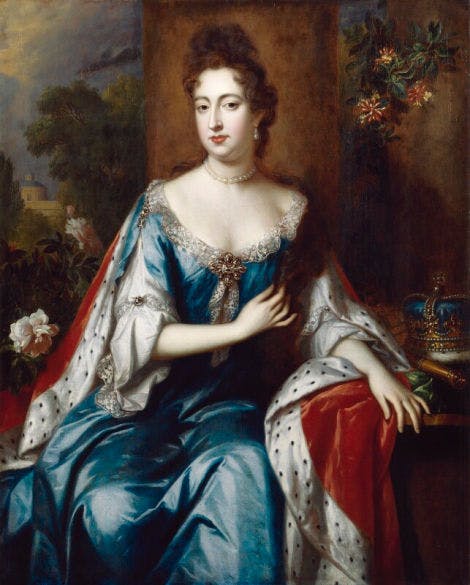
Image: Queen Mary II attributed to Jan van der Vaart, © National Portrait Gallery, London
Death of Anne's sister, Mary II
Anne’s health declined in the 1690s as repeated pregnancies and chronic illnesses took their physical toll. Now in her thirties, she could barely walk. However, she remained forceful in her politics, maintaining a separate court to rival William and Mary’s.
On 28 December 1694 Queen Mary II died of smallpox at Kensington Palace. With no heir of his own, King William III was forced to reconcile with Anne, who had the strongest claim to the throne.
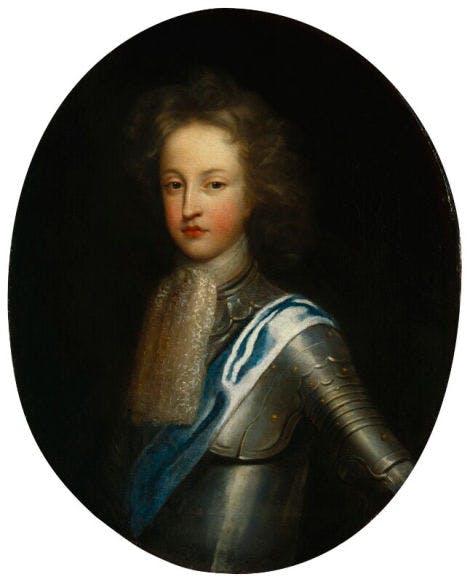
Image: William, Duke of Gloucester, attributed to William Wolfgang Claret, © National Portrait Gallery, London
Death of Anne's son and William III
On 30 July 1700, the Stuart dynasty lost its only Protestant heir. Anne’s beloved son, William, Duke of Gloucester, died of smallpox at Hampton Court Palace. He was 11 years old.
Anne’s personal tragedy changed British history, as the Act of Settlement of 1701 secured the Protestant Hanoverians, descendants of James I, as heirs to the British throne. Georg Ludwig of Hanover, once a contender for Anne’s hand in marriage, would now one day become King George I.
On the 8 March 1702, William III, injured in a riding accident, died at Kensington Palace. Anne was now queen of a country engaged in a bloody war in Europe, with rising factions of Whigs and Tories dominating politics.
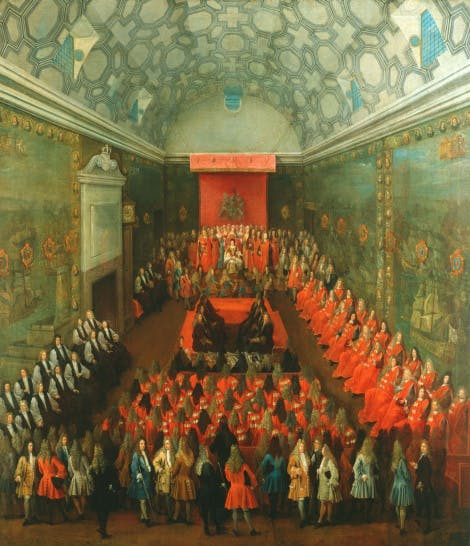
Image: Queen Anne (1665-1714) in the House of Lords c1708-14, Royal Collection Trust / © Her Majesty Queen Elizabeth II
The ascension of Queen Anne
Queen Anne’s first speech to Parliament set the direction of her reign, including her commitment to a Protestant succession.
She emphasised her own Englishness, in a critique of her Dutch predecessor, William III.
Anne was a surprisingly good public speaker, an impressive achievement for somebody normally very shy.
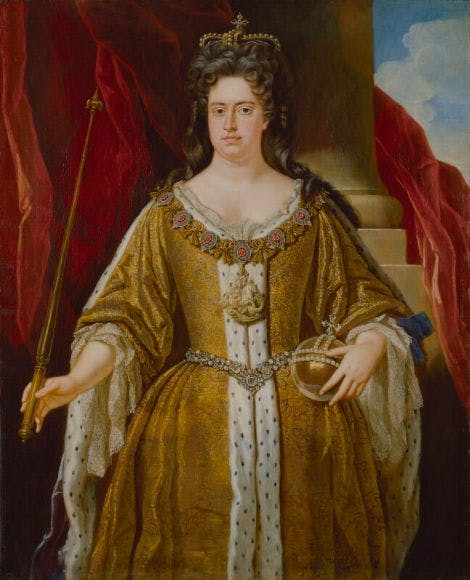
Image: Queen Anne © National Portrait Gallery, London
She pronounced this, as she did all her other speeches, with great weight and authority.
Bishop Gilbert Burnet on Queen Anne’s first speech to Parliament
What type of queen was Anne?
Even in her own lifetime, Anne was believed to be too weak to be an effective queen. The rise of Lady Sarah and Marlborough after her accession added to the impression that she was ruled over by her favourite. This is wrong. Anne proved to be a hardworking, resolute and popular monarch.
She attended the House of Lords regularly, met daily with her ministers, and successfully navigated rival political views to dominate politics as a parliamentary monarch.
Did you know?
Anne survived smallpox, a disease that killed three of her children and her sister.
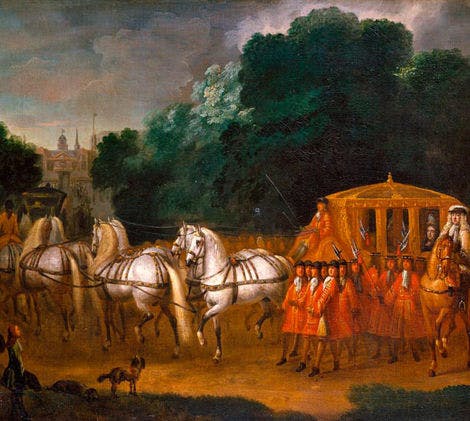
Image: Detail of Queen Anne's Procession to the Houses of Parliament c.1702-20, Royal Collection Trust / © Her Majesty Queen Elizabeth II
A moderate queen
Anne pursued moderation as a political strategy, a necessary tactic at a time of war, with competing political viewpoints.
The Whig faction, which included Lady Sarah Churchill and the Duke of Marlborough, supported Britain’s involvement in the War of the Spanish Succession.
The Tories gained greater power throughout Anne’s reign, winning control in 1710. The shift in political opinion contributed to the end of the war in 1713.

Image: Anne supported the Acts of Union of 1707, which united the crowns of England and Scotland into one country. She also successfully laid the way for George I to succeed her, while never letting him visit England during her reign, in case his presence threatened her power. Engraving by Valentine Green (1739-1813) from the drawing by Johann Gerhard Huck (c1759-1811) © Historic Royal Palaces.

Image: Queen Anne and Prince George of Denmark, Royal Collection Trust / © Her Majesty Queen Elizabeth II
Death of Prince George
Queen Anne did all this while disabled by her poor health, and while negotiating an increasingly difficult relationship with Lady Sarah Churchill.
The death of her beloved husband Prince George at Kensington Palace from severe asthma on 28 October 1708 left her devastated. It was only with great reluctance, after the insistence of Lady Sarah, that she abandoned her vigil by his body.
Anne resented these intrusive actions, yet Sarah continued to try to control and undermine the queen as she mourned, a mistake that further divided this once strong friendship.
As, James Brydges, Duke of Chandos, described it: ‘His death has flung the Queen into an unspeakable grief, She never left him till he was dead, but continued kissing him the moment the breath went out of his body.’
Queen Anne's favourites
Sarah had been Anne’s ‘favourite’, her closest friend who was also her political advisor and fixer. Wielding power on the monarch’s behalf, a favourite could accrue money and influence for themselves and their family.
The growing divide between Sarah and Anne during her reign was filled by another woman who gave the queen the support and friendship she needed, Sarah’s cousin, Abigail Hill.
Did you know?
Anne oversaw Abigail’s rise from bedchamber woman to royal favourite.
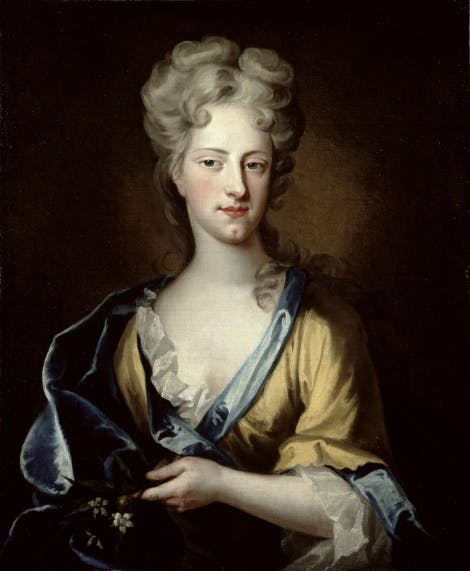
Image: Abigail Hill, Lady Masham, © Philip Mould Ltd, London/Bridgeman Images
Abigail replaces Sarah as favourite
In 1707 Anne was present at Abigail’s advantageous, but secret, marriage to Samuel Masham, who was an army officer who was groom of the bedchamber to Prince George, and gave her £2,000 as a dowry. Anne’s further favour towards Abigail, including a luxurious redecoration of her apartments at Kensington Palace, provoked the volatile Sarah’s fury.
Abigail may have begun her royal service as a close servant, dressing and waiting on the Queen, but she soon wielded great political influence. She was a close ally of the politician Robert Harley, a political rival to the Marlboroughs. Samuel Masham may even have married Abigail because of the influence she now had over the Queen.
Anne and Sarah's final argument
Anne and Sarah had their final, terrible, argument on 6 April 1710 at Kensington Palace. Anne refused to answer Sarah’s furious words, insisting that anything she had to say could be put in writing.
Sarah then attempted to blackmail the Queen. While Anne had destroyed the letters from Sarah writing as ‘Mrs Freeman’, Sarah had kept Anne’s letters as ‘Mrs Morley’, and now threatened to publish them.
Sarah’s political allies spread rumours that Anne and Abigail’s relationship was physical, talking of ‘dark deeds at night’. In doing so, Sarah ensured her own notoriety and influenced history’s view of Anne forever.
Did you know?
As sovereign, Anne used the King’s State Apartments at Kensington Palace, not the Queen’s.
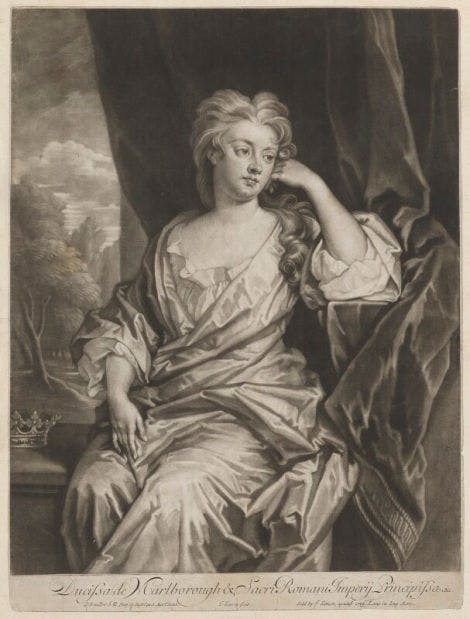
Image: Lady Sarah Churchill © National Portrait Gallery, London
Whatever you have to say, you may write it.
Anne’s devastating words, repeated relentlessly to Sarah (pictured) at their final meeting,
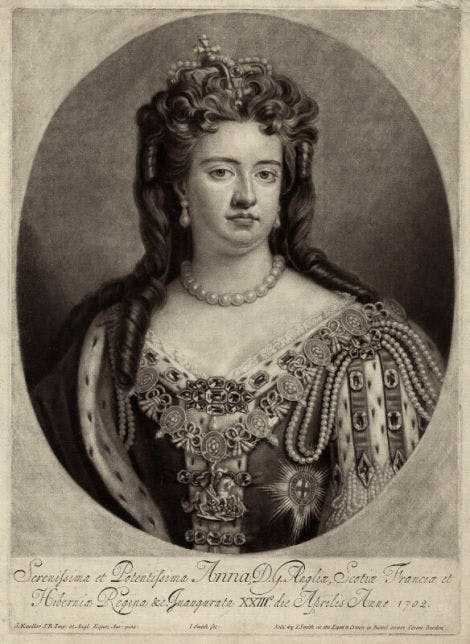
Image: Queen Anne, © National Portrait Gallery, London
The death of Queen Anne
On Friday, 30 July 1714, Anne had a series of severe strokes.
Her doctors treated her with bleeding, blistering, hot irons and garlic on her feet, an appalling treatment that caused the dying Queen great pain.
On Saturday, the Privy Council invited Georg Ludwig of Hanover to come to England as soon as possible as it was obvious the Queen's end was near.
Anne died at 7:45 am on Sunday, 1 August 1714, aged 49, at Kensington Palace.
The last of the Stuarts, her body lay at the palace for three weeks. Her funeral on 24 August 1714 was held at Westminster Abbey, where she is buried.
A changed country
Queen Anne left no clear will: perhaps her fear of death meant she could not bring herself to sign one, yet she left her country changed forever.
She created the United Kingdom as we know it today and prepared the way for the Hanoverians, the dynasty of the Georgians, who ruled Britain until Queen Victoria.
Queen Anne worked with a new kind of monarchy that we recognise today. No longer would monarchs rule by the divine right of kings, a belief that led her grandfather, Charles I, to the scaffold. Instead, monarchs ruled in conjunction with parliament.
Did you know?
Queen Anne commissioned the huge oak reredos (altar backdrop) in the Chapel Royal, Hampton Court.
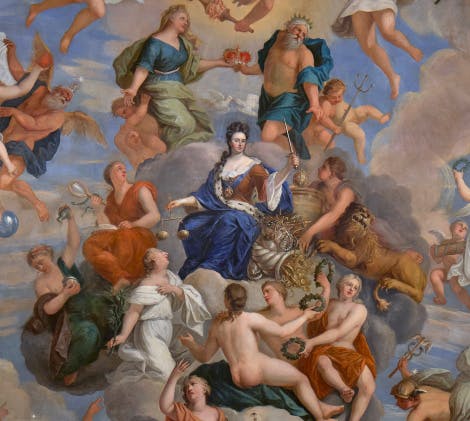
Image: The Queen's Drawing Room painted ceiling at Hampton Court Palace, showing Anne surrounded by a host of personified virtues, © Historic Royal Palaces
Discover Queen Anne's story
Queen Anne's legacy can be seen in her decoration of The Queen's Apartments, her transformation of the Chapel Royal and the East Front gardens at Hampton Court Palace. At Kensington Palace, she built The Orangery, as a greenhouse where she held balls.
Anne’s reign created modern Britain, and today at Kensington Palace and Hampton Court Palace you can walk in her footsteps in the places where this great queen lived, loved and ruled.
More from our experts

John and Mary: Black Children at Queen Anne's Court?
Hear from experts on our blog
Dr Misha Ewen explores what we know of John and Mary, two children baptised at the Chapel Royal of St James's Palace during Queen Anne's reign.
Browse more history and stories
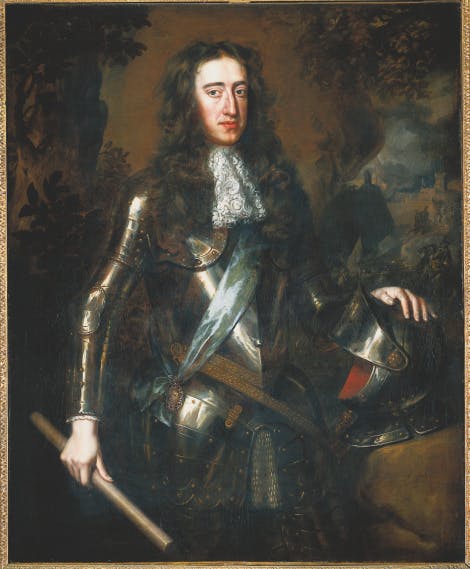
William III and Mary II
England's only joint sovereigns, who transformed Kensington Palace into a royal residence

The story of Kensington Palace
An elegant retreat for Britain's royal family

Mehmet von Königstreu
An Ottoman gentleman at George I’s Court
Explore what's on

- Things to see
The King's Staircase
Discover the intriguing and unexpected characters depicted on the grand entrance to the King's State Apartments.
- Open
- In line with palace opening hours
- Kensington Palace
- Included in palace admission (Members go free)

- Things to see
The King's State Apartments
Wander through the lavish rooms of the King's State Apartments, each one grander than the last, at Kensington Palace.
- Open
- In line with palace opening hours
- Kensington Palace
- Included in palace admission (Members go free)

- Things to see
The Palace Gardens
Walk in the footsteps of royalty in the beautiful Kensington Palace gardens.
-
Open
- 10:00 - 16:00. Last entry 15:45.
- Kensington Palace
- Free
Shop online

Courtiers: The Secret History of Kensington Palace
Told through the eyes of a courtier, this fascinating book explores the ambitious and talented people who flocked to the Georgian court in search of power and prestige.
£12.99

Shop Diana, Princess of Wales
Commemorate this incredible woman and pay tribute to her enduring legacy with our inspired collection of exquisite memorabilia, gifts and souvenirs.
From £2.50
